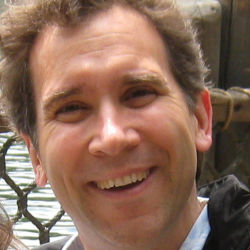
An article in today’s New York Times argues that, "Colleges are Failing in Graduate Rates." Specifically, the article claims:
The United States does a good job enrolling teenagers in college, but only half of students who enroll end up with a bachelor’s degree. Among rich countries, only Italy is worse. That’s a big reason inequality has soared, and productivity growth has slowed.
That’s a strong claim, that the failing rates in college are actually causing inequality. This isn’t the first time the Times has made this argument, though. <!–Mark Guzdial–>The first time that I read the claim that higher-education faculty were a significant cause of the widening gap between the haves and have-nots was in this column in 2005 by David Brooks of the New York Times. He explicitly argues that colleges, rather than being a ladder to improving one’s life, are actually reducing the opportunities for the poor. (Notice that Brooks explicitly links the gap to the maturing "information age.")
“As you doubtless know, as the information age matures, a new sort of stratification is setting in, between those with higher education and those without. College graduates earn nearly twice as much as high school graduates, and people with professional degrees earn nearly twice as much as those with college degrees. But worse, this economic stratification is translating into social stratification. Only 28 percent of American adults have a college degree, but most of us in this group find ourselves in workplaces in social milieus where almost everybody has been to college…The most damning indictment of our university system is that these poorer kids are graduating from high school in greater numbers. It’s when they get to college that they begin failing and dropping out. Thomas Mortenson of the Pell Institute for the Study of Opportunity in Higher Education has collected a mountain of data on growing educational inequality. As he points out, universities have done a wonderful job educating affluent kids since 1980. But they ‘have done a terrible job of including those from the bottom half of the family income distribution. In this respect, higher education is now causing most of the growing inequality and strengthening class structure of the United States.’”
CS faculty play a role in this phenomenon. No one who looks at CS1 failure rates could argue that CS doesn’t contribute to failing grades. Richard Tapia, in his foreword to Jane Margolis et al.’s Stuck in the Shallow End, makes the argument explicitly starting from his title, “Computer Science is Widening the Education Gap.“
No one is arguing that we should not seek the actual ‘best and the brightest.’ The real question is how we make that determination and how we develop those students. It’s easy to pick the ‘best and brightest’ who look like us, act like us, and learn like us. The challenge is to identify the students who are even brighter and better than us, but don’t look like us, act like us, or learn like us. With declining enrollment and a population of computer scientists who increasingly have the same gender and represent only a few ethnic groups, we must look beyond the simple definitions, find those terrific students whom we might have missed in our first glance, and help them to develop in the ways that best suit them.“Over the years, I have developed an extreme dislike for the expression ‘the best and the brightest,’ so the authors’ discussion of it in the concluding chapter particularly resonated with me. I have seen extremely talented and creative underrepresented minority undergraduate students aggressively excluded from this distinction. While serving on a National Science review panel years back, I learned that to be included in this category you had to have been doing science by the age of ten. Of course, because of lack of opportunities, few underrepresented minorities qualified.”



Join the Discussion (0)
Become a Member or Sign In to Post a Comment